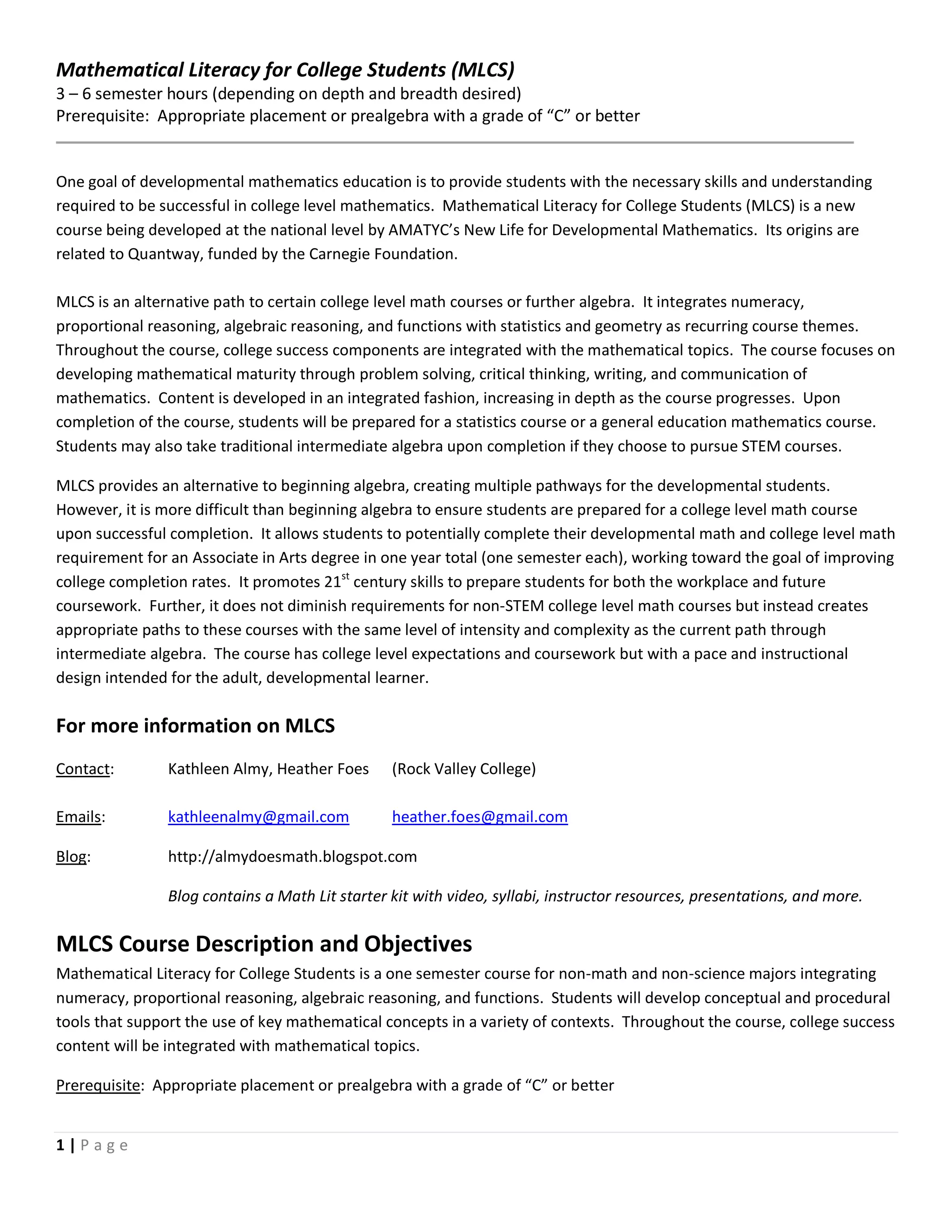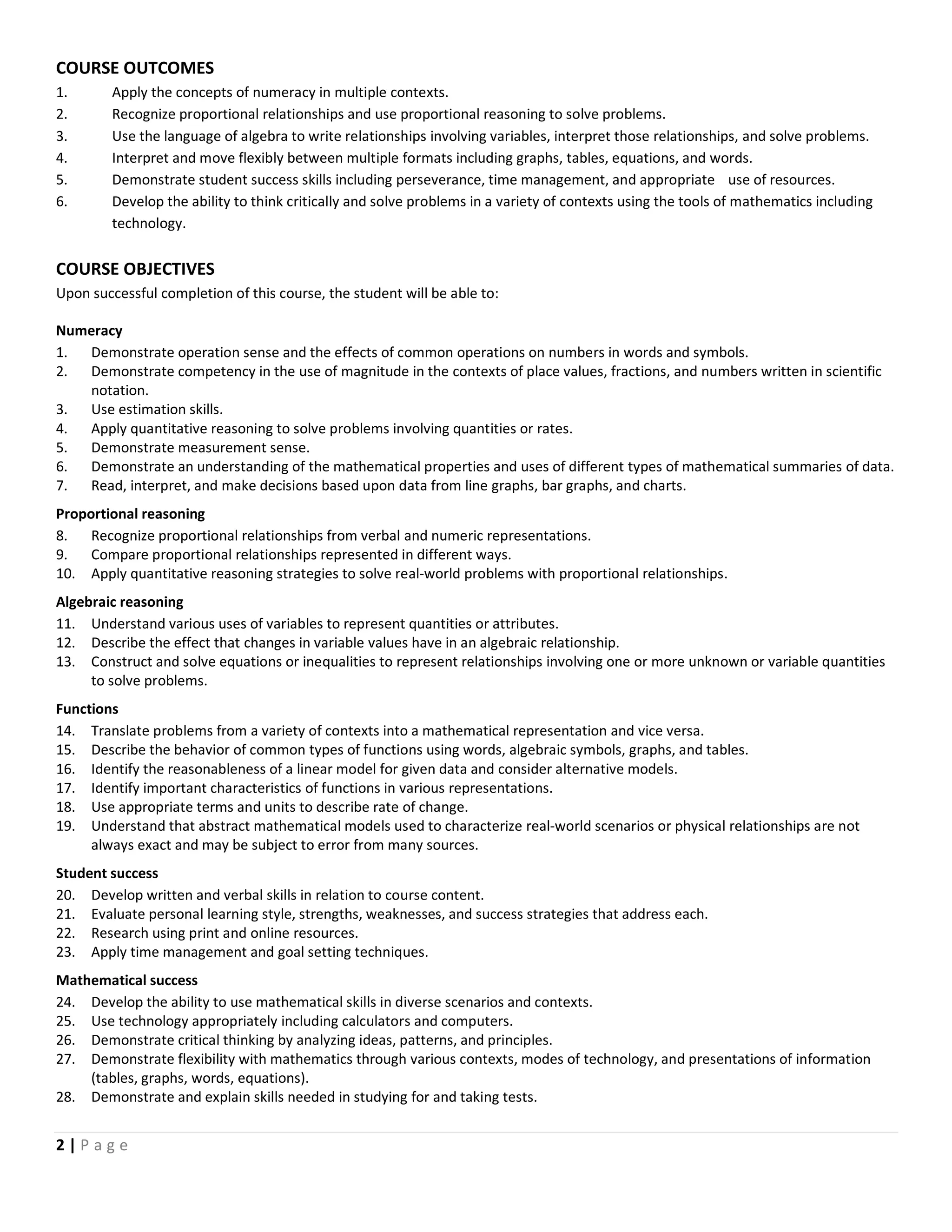Mathematical Literacy for College Students (MLCS) is a new course being developed at the national level to provide an alternative path to college-level math courses for non-STEM majors. The course integrates numeracy, proportional reasoning, algebraic reasoning, functions, statistics, and geometry. It focuses on developing problem solving and critical thinking skills. Upon completion, students will be prepared for a statistics course or general education math course, or can take traditional algebra. The course aims to help more students complete their math requirements in one year to improve college completion rates.

